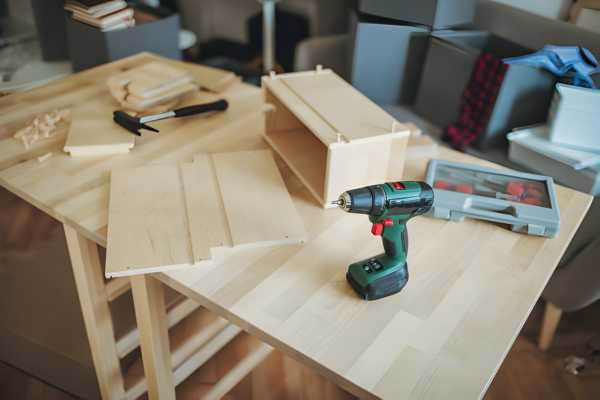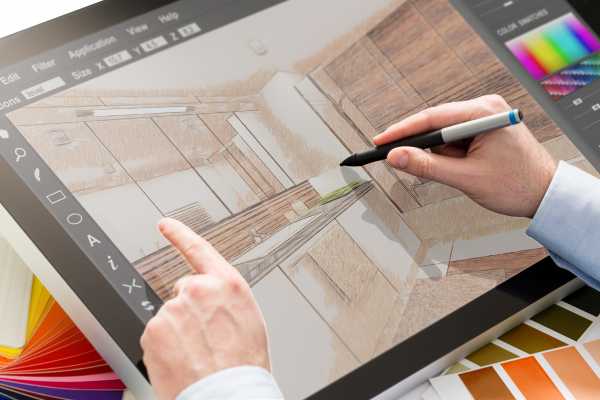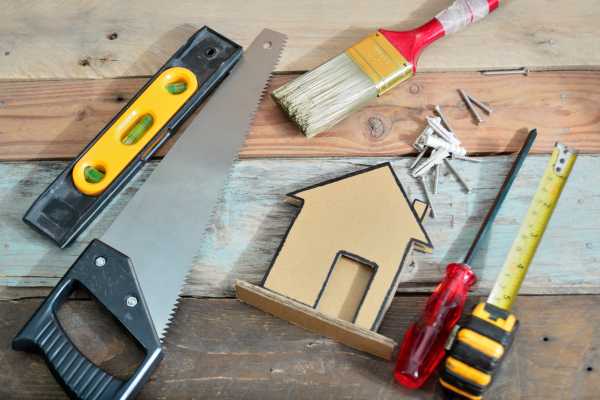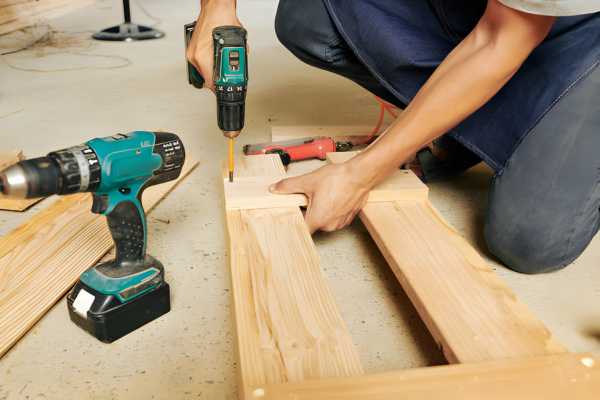Build Bedroom Desk is an enriching project that merges functionality with personal expression. A desk in your bedroom isn’t just a piece of furniture; it’s a hub for creativity, work, study, and organization. Whether you’re customizing a workspace for your remote job, setting up a spot for your night-time reading, or crafting a dedicated area for your hobbies, a bedroom desk can significantly enhance your personal space’s utility and aesthetics. This guide will walk you through the essential steps to create a desk that not only meets your functional needs but also adds a touch of personality to your bedroom.
Planning Your Space

The first step in your desk-building journey is to plan your space thoughtfully. Start by measuring your bedroom to identify how much space you can dedicate to your new desk. It’s crucial to consider the room’s layout and flow, ensuring your desk enhances the room’s functionality without causing clutter. Choosing the right location is equally important. You want a spot that benefits from good natural lighting, offers a comfortable ambiance for working or studying, and complements the room’s overall design. Whether it’s a cozy corner or alongside a window with a view, selecting the right spot can significantly impact your productivity and comfort.
Designing Your Desk

Once you’ve planned your space, the next step is to design your desk. This phase is where your creativity and personal style come into play. Select a design that harmonizes with your bedroom’s decor to create a cohesive look. Are you aiming for a minimalist vibe, a rustic feel, or perhaps something sleek and modern? Your desk’s style should reflect your personal taste while blending seamlessly with the room’s aesthetic. Next, consider the materials you’ll need. Durability, aesthetics, and maintenance are key factors when choosing materials. Whether you opt for classic wood, contemporary metal, or a combination of materials, ensure they align with your design vision and practical needs. By carefully selecting your design and materials, you’ll be well on your way to creating a functional and stylish workspace in your bedroom.
Tools and Materials

Embarking on the journey of building your own bedroom desk, having the right tools and quality materials is crucial for a successful outcome. Here’s a breakdown of what you’ll need:
List of Essential Tools
- Saw: Whether it’s a circular saw, jigsaw, or hand saw, you’ll need a reliable cutting tool to shape your materials accurately.
- Drill: A power drill with assorted drill bits will come in handy for making holes and securing screws.
- Screwdriver: Both a Phillips head and a flathead screwdriver will be necessary for assembling components.
- Measuring Tape: Precise measurements are key to ensuring everything fits together seamlessly.
- Level: To guarantee that your desk is balanced and stable, a level will help you check for evenness.
- Sandpaper: Smooth out rough edges and surfaces for a polished final result.
- Safety Gear: Don’t forget safety goggles and gloves to protect yourself during the construction process.
Choosing Quality Materials for Durability
Selecting materials for your desk, prioritize quality and durability to ensure that your finished product will withstand everyday use. Consider the following:
- Wood: Opt for sturdy, solid wood or high-quality plywood for the desk surface and frame. Hardwoods like oak, maple, or walnut are popular choices for their strength and aesthetic appeal.
- Fasteners: Use high-quality screws and bolts to secure components together securely. Avoid using cheap or flimsy fasteners that may loosen over time.
- Finish: Apply a durable finish, such as polyurethane or lacquer, to protect the wood from scratches, stains, and moisture damage. Choose a finish that complements the overall look of your desk and enhances its longevity.
Building the Desk Frame

Now that you’ve gathered your tools and materials, it’s time to dive into constructing the frame of your bedroom desk. Follow these steps for a sturdy and stable foundation:
Step-by-step Guide to Constructing the Frame
- Measure and Cut Lumber: Begin by measuring and cutting the lumber according to your desk design specifications. Use a saw to make precise cuts, ensuring that all pieces are the correct length and angle.
- Assemble Side Panels: Lay out the cut pieces to form the side panels of the desk frame. Use a drill and screws to attach the pieces together, creating sturdy joints at each corner.
- Add Support Beams: Install support beams or crossbars between the side panels to reinforce the frame’s structure. Position the beams evenly and secure them in place with screws.
- Check for Squareness: Use a measuring tape and a level to ensure that the frame is square and level. Adjust as needed to correct any discrepancies before proceeding.
- Attach Legs: Attach the legs to the bottom of the frame, ensuring that they are securely fastened and evenly spaced. Use a level to confirm that the desk sits flat on the floor without wobbling.
- Reinforce Joints: To further enhance stability, consider adding corner braces or brackets to reinforce the joints where the frame pieces meet.
Tips for Ensuring Stability
- Use Proper Joinery Techniques: Choose strong joinery methods such as mortise and tenon, dovetail, or half-lap joints for maximum stability.
- Select Sturdy Materials: Opt for thick, heavy-duty lumber and fasteners to prevent the desk frame from sagging or warping over time.
- Check for Wobble: Before proceeding with the next steps, test frame for any wobbling or instability. Make any necessary adjustments to ensure a solid foundation for the desk.
Crafting the Desktop
Creating a functional workspace begins with crafting your desktop, the centerpiece of your desk. This stage is critical because it determines how effectively you’ll be able to use your desk. Start with selecting the right size and shape that fits your available space and meets your working needs. Whether you need ample space for multiple monitors, space for writing, or a spot for your creative projects, your desktop should cater to these requirements. Customization is key to personalization; consider integrating features that enhance your productivity and reflect your style. You might add built-in cable management, a slot for your tablet or phone, or even choose a specific color or finish that resonates with your personal taste. By focusing on both function and form, your desktop can become a tailored space that inspires and facilitates your daily tasks.
Finishing Touches
Once your desktop is crafted, applying the finishing touches can significantly elevate its look and functionality. Sanding your desktop is essential for a smooth, snag-free finish that’s pleasant to touch and visually appealing. Whether you choose to paint, stain, or varnish your desktop, this step is crucial for protecting the material and enhancing its appearance. Consider your room’s color scheme and design theme when selecting finishes. Adding drawers or shelves can vastly improve your storage capacity, helping you keep a tidy and organized workspace. Whether it’s for storing your stationery, books, or tech gadgets, these additions can make a big difference in maintaining a clutter-free.
Setting Up Your Workspace
With your desk built and finished, setting up your workspace is the next step toward productivity and comfort. Organizing your desk is key to creating an environment that fosters focus and efficiency. Use organizers, trays, or holders to keep your essentials within reach but not in the way. Consider the layout of your tools and devices; they should be arranged in a manner that reduces clutter and allows easy access. Ergonomic seating is another critical aspect of your workspace setup. Choose a chair that supports your posture, with adjustable height and back support to prevent strain during long hours of work or study. The right chair can make a significant difference in your comfort and health over time.
Maintenance and Care
To ensure your desk remains a centerpiece in your bedroom for years to come, regular maintenance and care are essential. Keep the surface clean and free from spills or stains. Use appropriate cleaners for your material to avoid damage. Periodically check for wear and tear, especially if you have moving parts or mechanisms. Tighten any loose screws and repair minor damages before they become significant issues. If your has a wooden component, watch for signs of moisture or pests, which could compromise the wood’s integrity. By dedicating a little time to maintain it, you can keep it looking great and functioning well, making your investment last longer and continue to serve your needs effectively.
How Much Does It Cost to Build a Bedroom Desk?
The cost of building a bedroom desk can vary widely depending on the materials chosen, the complexity of the design, and whether you’re doing it yourself or hiring someone. If you’re on a DIY path, you might only need to invest in the raw materials and some basic tools if you don’t already have them. Economical options like pine wood can keep costs down, while opting for hardwoods or specialty materials can increase the price. Additionally, hardware components like screws, brackets, and drawer slides, if you’re adding storage, will contribute to the cost. On average, building a simple yet sturdy desk can cost anywhere from $50 to $200 in materials. However, if you’re aiming for a more elaborate design or high-end materials, the costs could escalate to several hundred dollars.
How Long Does It Take to Build a Bedroom Desk?
The time it takes to build a bedroom desk can also vary. For a straightforward design, a weekend might suffice from start to finish, including planning, shopping for materials, and the actual construction. More complex designs or those requiring intricate detailing, additional storage solutions, or custom elements might take several weekends or even longer. If you’re new to woodworking or DIY projects, you might also need to account for a learning curve. Ensuring you have all the necessary tools and materials before starting can help streamline the process and reduce time delays.
Do I Need Any Special Skills to Build a Bedroom Desk?
Building a bedroom desk doesn’t necessarily require special skills, but some basic woodworking knowledge and familiarity with tools can be extremely beneficial. Understanding how to measure, cut, and assemble wood safely and accurately will contribute to the success of your project. There are plenty of resources available, including online tutorials, books, and workshops, that can help you gain the necessary skills. With patience and a willingness to learn, most people can successfully build a functional and aesthetically pleasing it.
Conclusion
The process of building a bedroom desk is a rewarding endeavor that allows for considerable customization and creativity. Whether you’re aiming for a simple and functional design or a more elaborate and personalized workspace, the journey from planning to completion is an opportunity to create something uniquely suited to your needs and style. Remember, the key to a successful build is thorough planning, choosing the right materials, and taking your time to ensure quality craftsmanship. By investing effort and creativity, you can build a desk that enhances your bedroom and serves you well for years to come.
